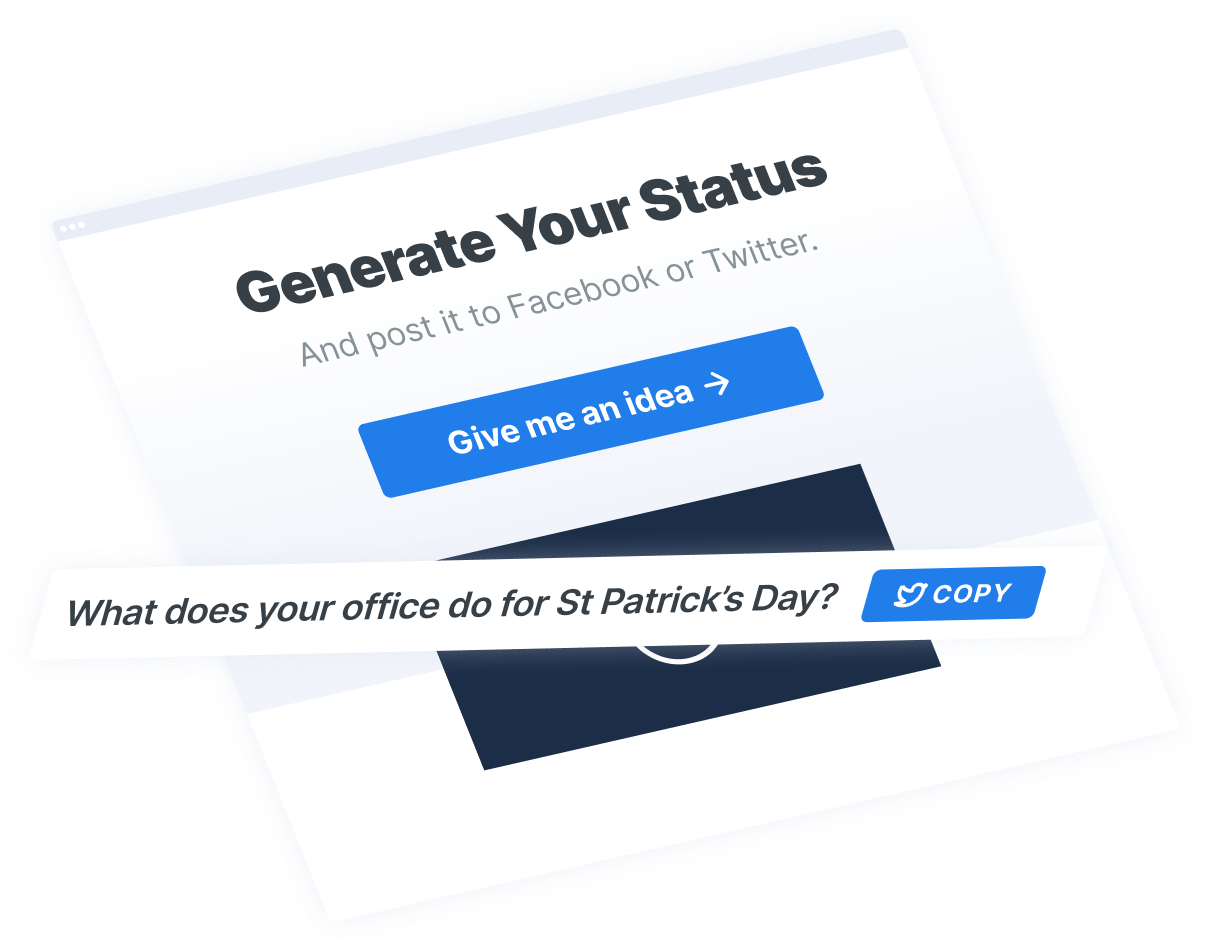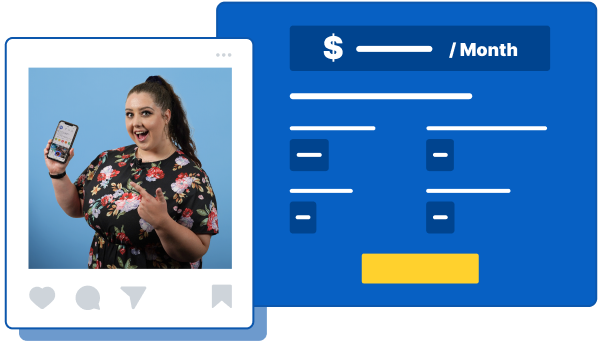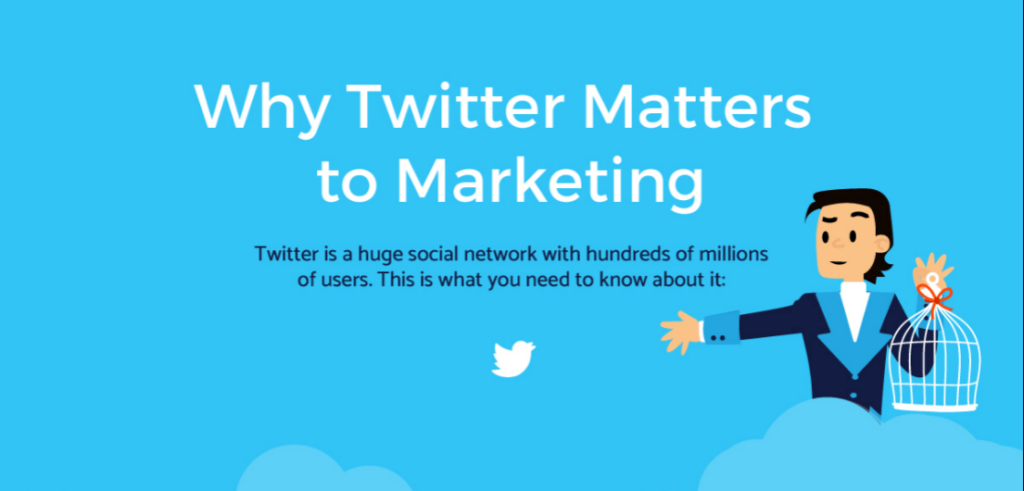- Home
- Blog
- Social Media Why Twitter Matters to Marketing [INFOGRAPHIC]
Why Twitter Matters to Marketing [INFOGRAPHIC]
-
 11 min. read
11 min. read
-
 WebFX Team
WebFX Team Digital Marketing Agency
Digital Marketing Agency
- The WebFX team is made up of more than 450 subject matter experts in digital marketing, SEO, web design and web development, social media, and more. Together, they’ve helped WebFX’s clients earn more than $3 billion in revenue from the web — and that’s just in the past five years. @webfx
Twitter is a social media giant, second only to Facebook in terms of users and worldwide popularity. It’s a microblogging platform that lets any user write posts and share content under 240 text characters. As a platform, Twitter is short, sweet, and to the point.
That’s what makes it the perfect fit for marketing.
Below, you’ll find company, user, and marketing statistics for Twitter. With that information, you can discover whether Twitter is a worthwhile marketing choice for your business. 
Love Twitter but want more?
Check out Threads, Instagram’s answer to Twitter!
Threads vs. Twitter: What’s the Difference?
Twitter statistics
Twitter has revolutionized the Internet in its own way. The platform combines blogging, social media, and community-building all into one cohesive package. And it’s done all of that in just 10 years.
Twitter isn’t in its teens yet, but it’s managed to accumulate 1.3 billion accounts.
Spread evenly throughout the world, that theoretically means about one out of every seven people is on Twitter. Naturally, that isn’t the case. Some people have multiple accounts.
Some businesses have multiple accounts. And some accounts are spam bots.
All in all, that means about 310 million accounts — roughly the population of the United States — regularly use Twitter every month. But even with that surprising disparity, Twitter adoption is still on the rise.
It grew 1.6% from Q4 of 2015 to Q1 of 2016.
With 1.3 billion accounts, that’s an increase of almost 21 million signups in one quarter. For a hybrid social network and blog outlet, it’s an incredible achievement to be going that strong after a decade. Twitter has also adapted to the changing model of the Internet — namely, the shift to mobile.
80% of Twitter’s active users access it via a mobile device, which isn’t that surprising considering the sharp rise in smartphone adoption since the creation of the iPhone.
Coincidentally, 80% of Twitter’s users are Millennials — also called “90s kids” — who have collectively witnessed the rise of the Internet and cell phones.
They’re the wired-in generation that’s caused so much concern about the addictive and developmental hazards around the Internet. Their recent surge from higher education into the worldwide workforce also makes them the up-and-coming moneymakers of the world, controlling $1 trillion and quickly earning more. Taking those numbers even further, we can get a (very) rough estimate for how much each Millennial on Twitter controls in spending power.
80% of Twitter’s active users are Millennials, or 248 million people.
There are about two billion Millennials in the world controlling $1 trillion in spending. 248 million is about 13.9% of the population, meaning they control the same percentage of Millennial wealth.
That means 80% of Twitter’s active users control roughly $139 billion in spending power. In reality, it’s probably a little more than that.
No one can afford to ignore that kind of cash, whether you’re a Fortune 500 company or a two-person startup.
Twitter user statistics
Now that we’ve covered Twitter’s general stats, let’s take a closer look at their users.
23% of all Internet users are on Twitter.
That’s an incredible population of potential customers, and there are bound to be at least a few good leads for you. Generally, Twitter tends to be more popular with men than women, and in terms of age (as opposed to generation), 40% of all users are between 18-34.
Beyond that, more than 26% of Twitter users earn $75,000 annually, giving them a substantial disposable income. But even looking beyond users, you still have to take into account the people who visit Twitter without having an account.
Surprisingly, that winds up being about 500 million people every month.
That gives you half a billion more potential customers that can see your Twitter profile, even if they can’t interact with it. Beyond that, Twitter users tend to be highly active on their profiles. They send about 6000 tweets every second.
Assuming each tweet is 140 characters, that’s 840,000 characters every second. Considering the average book page contains about 5000 characters, that’s 168 pages of text — roughly the size of The Strange Case of Dr. Jekyll and Mr.
Hyde. (Although a second’s worth of tweets probably wouldn’t make a very good book.)
In terms of monetary value, each Twitter user is worth about $118, and each Twitter user you send to your site is worth about 62 cents. That may not sound like much, especially after we dove into the spending power of Twitter’s Millennial audience.
But even if you only have 100 followers, that’s about $12,000 more in value that you add to your brand.
By extension, Katy Perry has the potential to earn about $10.7 billion from her following of 90.6 million users. Considering she’s rich and famous, that makes sense. So let’s take a look at how your company can become richer (and famous-er) by moving your brand to Twitter.
Twitter & brands
On Twitter, brands have a golden opportunity to talk to a colossal audience.
And while that may sound intrusive, Twitter users actually appreciate brands. That’s why so many brands use it every day.
First, 66% of all US companies with 100+ employees use Twitter. So if you have a decently-sized small business, you need to be on Twitter just to keep up with your competitors.
That’s why 92% of companies on Twitter tweet more than once per day.
The more they talk, the more opportunities they have to connect with potential customers. That only works for organic reach, though. And on Twitter, organic reach is only visible to followers and people using the search function.
That makes it important to include commonly-used words and phrases in tweets, especially trending hashtags, which you can see on the left-hand side of your profile dashboard. But what if you don’t want to rely on organic reach? Fortunately, Twitter has a helpful solution.
Twitter’s advertising system is a great way for you to get more followers and reach more customers.
It’s so good, in fact, that paid ad engagement grew 208% between 2015 and 2016. On top of that, most advertisers on the platform spent 25% of their budgets on mobile ads only so they could reach as many users as possible.
And that money doesn’t go to waste, either — 52% of Twitter users say they’ve bought an item they first saw on twitter.
Twitter advertising is so powerful that 81% of users say it’s more impactful than television. That’s a big statement, considering television has been the reigning king of advertising for decades. Plus, it has lots of implications for shifting user demographics, especially consumers that are moving more toward digital instead of conventional media.
These customers are worth a lot of money, too. The average customer from Twitter spends $46.29 per purchase. Considering you can reach thousands of people with a single free tweet, that’s an incredible ROI.
Finally, you can reach out to more people than just new customers. You can also attract new employee applications.
Most brands already do this, which is why companies tweet about 15 new job postings on Twitter every minute. With that in mind, there’s one big question to answer next — how do consumers and brands actually interact on Twitter?
User-brand interactions
Twitter bridges the gap between consumers and brands to create a convenient two-way street.
Brands can speak to consumers one-on-one, as people. And consumers can get the attention of a brand without sitting on a customer service line for hours on end. In that respect, Twitter usage is a win-win for everyone involved.
This win-win is so prevalent that 85% of a brand’s followers feel more connected to a business.
In general, that’s a positive sentiment since you want your customers as close to your business as possible. That makes it easier for you to promote new products, and you can also research customer profiles to see who’s in your primary customer demographic. On top of that, 84% of Twitter users who interacted with a brand say they had a positive experience.
That could be for any number of reasons from sharing a joke to quickly responding to a customer service call. Either way, it makes customers like you more, and it gives you a better relationship with your buyers.
Honestly, brands don’t have to do all that much to win the affections of their followers either. 77% of Twitter users like a brand more whenever a brand replies to their tweet. That’s probably the easiest form of customer service in the world.
These positive results don’t just stay on Twitter, either.
Companies that use Twitter specifically for customer service see a 19% increase in overall customer satisfaction, mostly because brands are so much more accessible on Twitter than over the phone. But one of the best perks comes from simply having followers.
70% of small business followers retweet brand content. So even if you only have 100 followers, 70 of them will retweet your content out to their followers, giving you a potential reach of thousands.
In addition, 72% of brand followers say they’re likely to buy from a brand in the future.
And if you think you’ll have trouble getting lots of followers, keep in mind that 58% of brand Twitter accounts have over 100,000 followers.
Finally, the benefits of Twitter don’t stop at Twitter. Even if you have a physical storefront, you can still increase sales at your business by 29% by using Twitter’s promoted tweets. So we’ve talked about the benefits of Twitter — now we need to cover how you can use it to reach your customers!
Times to tweet
Consumers show similar trends in when they use Twitter, no matter what time zone they’re in.
The best time to tweet for favorites is almost always midnight, right when people are either unable to fall asleep or just going to bed.
The best time for replies is, surprisingly, 1 a.m., which is one of the least popular times for users to be on Twitter.
Even stranger, the best time for clicks is about 2 a.m., which is when most people are asleep in any given time zone.
But eventually, it appears that most Twitter users do sleep since between 3 and 4 a.m. is the least popular time to tweet.
Similarly, 12 to 1 p.m. is the most popular time to tweet, right when everyone is having their lunch. After that, 9 p.m. is often the best time for overall engagement, and 11 is the best time for retweet.
And if you want to get as much as possible from these stats, you can tweet on weekends when brand engagement is 17% higher. It’s important to note that while these trends are helpful, they may not apply to your brand specifically.
Check out Twitter analytics and Followerwonk to learn the best time for your brand to tweet and reach more customers.
So now we’ve established when you should tweet. But what should you tweet?
What to tweet
Brands have asked themselves this question since they first started using Twitter. But it’s only been recently that marketers can concretely point to characteristics of a tweet that make it successful.
First, tweets with one hashtag tend to get 29% more engagement from Twitter users.
But tweets with more than one hashtag get 17% less engagement. That inverse correlation points to one of marketing’s fundamental principles — keep it simple.
Tweets with links are twice as likely to get retweets, too. So adding a link to a tweet with a hashtag automatically raises its chances of attention.
Next, tweets with images get 18% more clicks, 89% more likes, 150% more retweets, and five times as much overall engagement.
With those metrics alone, you’d almost have to be crazy to craft a tweet without an image! You can also combine links and tweets to get 150% more overall engagement, which goes a long way to growing your following and getting your name into the Twitterverse.
Last, tweets with videos get 1.9 times as many favorites, 2.5 times as many replies, and 2.8 more retweets than average. As you can see, multimedia is probably the best way for your business to reach consumers.
If you make an eye-catching tweet, it’ll likely be more successful than using text alone.
Profile best practices
Finally, let’s take a look at your brand’s profile.
There are a handful of best practices that you can use to ensure your loyal customers can find and interact with you.
- Optimize your Twitter bio with your name, industry, and related keywords (but don’t stuff it full of hashtags)
- Follow the big influencers and thought leaders in your industry
- Tweet regularly — not necessarily at the same times every day, but enough so that people know they can expect to hear from you daily
- Ask for retweets (even though it might feel a little selfish)
- Use a hashtag somewhere on your bio that defines you
- Use branded images
- Retweet and favorite other tweets — maybe even tweet at someone yourself
- Monitor Twitter analytics for your profile
With those eight steps, you’re off to a strong, smart start for your business.
Are you using Twitter for marketing?
Take some time to think it over, if you’re not. But if you’re convinced, you can start marketing on Twitter today — literally! Drop us a line @webfx if you do!
-
 The WebFX team is made up of more than 450 subject matter experts in digital marketing, SEO, web design and web development, social media, and more. Together, they’ve helped WebFX’s clients earn more than $3 billion in revenue from the web — and that’s just in the past five years.@webfx
The WebFX team is made up of more than 450 subject matter experts in digital marketing, SEO, web design and web development, social media, and more. Together, they’ve helped WebFX’s clients earn more than $3 billion in revenue from the web — and that’s just in the past five years.@webfx -

WebFX is a full-service marketing agency with 1,100+ client reviews and a 4.9-star rating on Clutch! Find out how our expert team and revenue-accelerating tech can drive results for you! Learn more
Twitter and Facebook Status Generator
Finding engaging social media content for your business can be difficult. Use our tool to quickly find ideas and post directly to your page.
Give Me an Idea

Social Media Cost Calculator
Use our free tool to get a free, instant quote in under 60 seconds.
View Social Media CalculatorTwitter and Facebook Status Generator
Finding engaging social media content for your business can be difficult. Use our tool to quickly find ideas and post directly to your page.
Give Me an Idea





